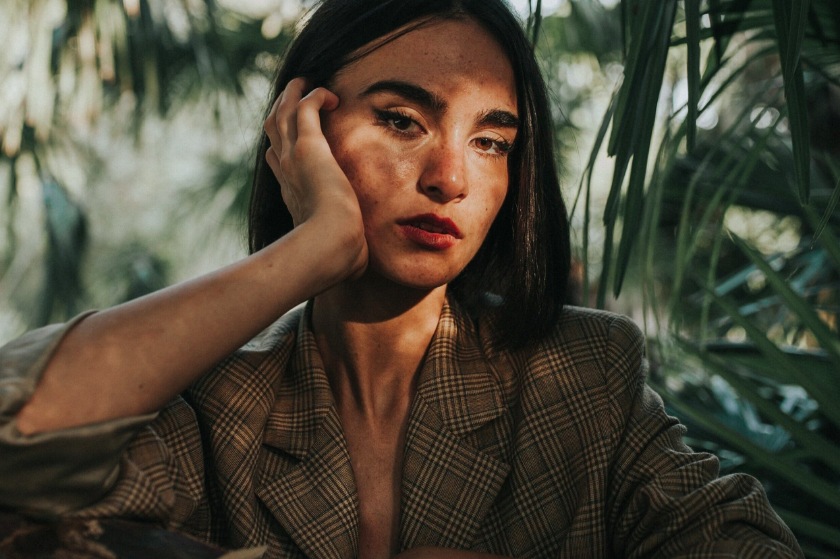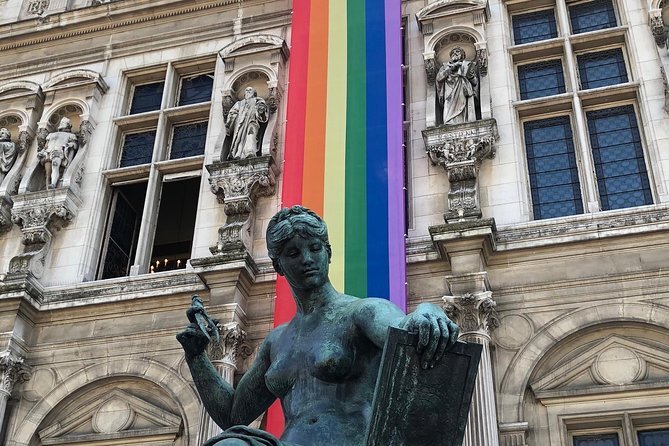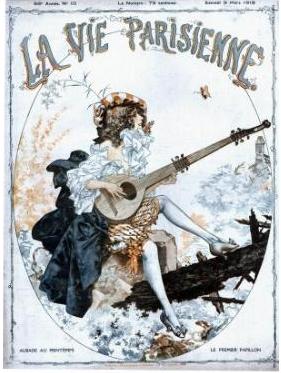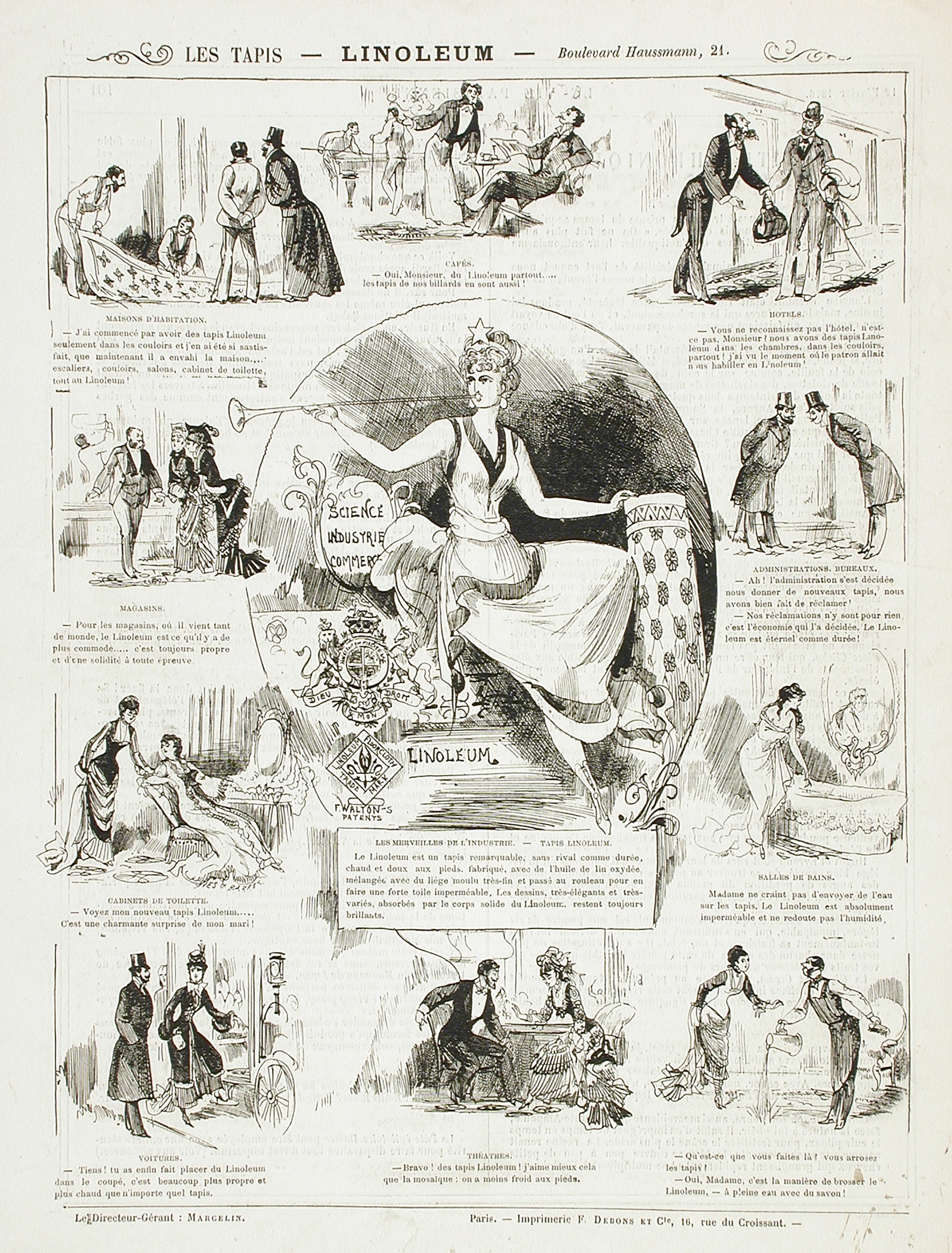
Le Marais: "Gay Paris" and the Construction of an LGBTQIA+ mecca
Where are the hottest gay clubs in Paris these days? The Marais.
by Brian Alcamo
If you’ve ever been to Paris, you’ve most likely heard of and been to the Marais. Originally a swamp (the English translation of the word marais) and a home to poorer inhabitants, the neighborhood was quickly gentrified into one of Paris’s most sought after commercial zones. It is also Paris’s most well-known gay neighborhood.
For those not in the know, the Marais is located in Paris’s 3rd and 4th arrondissements, on the Right Bank, or Rive Droite, of the Seine. The main gay areas of the neighborhood are concentrated along and around Rue Sainte-Croix-de-la-Bretonnerie. Rue du Temple and the Rue Vieille-du-Temple are considered the quarter’s other main arteries. While the area today is easily identifiable with old architecture, expensive boutiques, and rainbow flags, the Marais wasn’t always the prime Parisian locale for LGBTQIA+ culture. It also wasn’t always a hot tourist destination.
Originally, from the mid 13th to 17th Century, le Marais was the place to be in Paris for French nobles. They built their urban mansions, or hotels particuliers (literally “private hotels”) around the modern-day Place des Vosges, then called the Place Royal. Eventually, the Marais’s popularity declined before turning to complete disarray during the French Revolution. For a long time, the Marais wasn’t filled with much in the way of fabulous queer nightlife. It was a place of poverty, and notably served as Paris’s Jewish neighborhood for decades (specifically in the part of the neighborhood known as the Pletzl).
The Place des Vosges
But just because the Marais wasn’t the place to be gay in Paris, doesn’t mean a gay neighborhood didn’t exist. During the twentieth century until the end of the 1970s, Paris’s queer center of gravity moved a few times. Paris first became a gay capital in the 1920s with its first “golden age” of gay life. Its status as a gay haven was (and is) rivaled only by Berlin on the European continent. Many notable queer artists and writers (such as Colette, Satie, and Gertrude Stein) championed the city as a gay paradise, particularly for gay women. This first gay neighborhoods were centered on La Butte Montmartre and Pigalle. During German Nazi rule in the 1930s, Berlin ceased to be queer friendly, and thus Paris was the number one destination for LGBT Europeans. After the war, Paris’s in-vogue gay neighborhood shifted for the first time to Saint-Germain-des-Prés (on the Left Bank of the Seine).
Towards the end of the 1950s, the neighborhood then migrated back to the Right Bank, this time near the Place de l’Opera and Rue Sainte-Anne. This location was considered by some to be Paris’s first gay neighborhood, since its existence was the first to be “known to Parisians.” Beforehand, the neighborhoods were more clandestine, even if they can be traced back to by historians and academics today.
After spending two decades near l’Opéra, Paris’s first gay bar, Le Village, opened on Rue du Platre in 1977 just south of the Marais. One theory as to why the neighborhood moved was because people were fed up with the increased commercialization and door-checks happening. Regardless of the reason, gay businesses and life began to flourish just a few blocks northeast in Marais proper afterwards.
It’s important to note that it was gay businesses (notably thanks to entrepreneur David Girard) that created the Marais-As-Queer-Capital, and not the migration of queer people’s living quarters. Not that many gay people live in the Marais. In fact, the Marais isn’t even necessarily thought of as a residential gay neighborhood, rather a gay center. Its shops and bars cater to a gay clientelle, but the residential real estate wasn’t and isn’t overwhelmingly populated by gay people. Unlike New York’s Hell’s Kitchen (previously Chelsea, and the West Village before that), the Marais was always a place LGBT people, notably gay men, spent their free time. They’ve used the area as a transient space, as their own playground before going back to their apartments all over the city.
Helpful Vocabulary When Talking About Gay Life in Paris
Un marais - A swamp
Un hôtel particulier - A French mansion or
literally “a private hotel”
L’âge d’or - The Golden age
Un bar - A bar
Aller boire un verre - To go get a drink
Prendre un verre - To have a drink
Aller en boîte - To go to the club
Faire la fête (teuf*) - To party
Research has shown that the number of same-sex households holding PACS (pacte civil de solidarité, or civil unions) is evenly distributed throughout the city, indicating that gay people live everywhere throughout Paris, not exclusively in the Marais. Perhaps this residential decentralization is why Paris’s gay community is considered to be less overt and less organized compared to New York’s or Berlin’s.
Despite the Parisian gay scene potentially being thought of as less “out there” compared to other queer capitals, its existence is still crucial to LGBTQIA+ identity and community in France and around the world. Regardless of where the “gayborhood du jour” is, these queer spaces help create a collective queer identity where people can be who they were born to be.
Thanks for Reading!
Thinking of visiting Paris anytime soon? Be sure to check out the Marais. Please leave this article a “like,” and share it with a friend (or two)!
Thumbnail photo by Sophie Louisnard.
Revolutionary Art & Free Bitcoins
Solve a puzzle and win a crypto prize, all in the name of l’art.
A Paris based street artist has created a crypto-inspired masterpiece that has quite the hidden gift for those smart enough to find it.
Pascal Boyart has hidden $1,000 worth of Bitcoin inside a new mural in Paris. The big catch is that it’s location is undisclosed. Inspired by the famous Eugène Delacroix artwork “La Liberté guidant le peuple” (Liberty leading the people) from the 19th century, Boyart pays homage to the Gilet Jaunes, or Yellow Jackets (the French protest movement fighting for reprieve from an ever-increasing cost of living and what has been described as indifference of the current leader of France, Emmanuel Macron.
Photo: L’Express
Boyart posted to Reddit stating that in order “to solve the puzzle you must be in front of the mural,” Foreigners need not fear as he has stated that possible to solve “part” of it even if you aren’t in France.
This piece is the latest in a series of prominent Bitcoin-infused artworks from Boyart, who has said that he plans to create a new mural every six months while using BTC donations to fund his work.
Thinking of getting in on the BTC cash grab? You can track the status of the bounty through the Bitcoin address found here. As of now, the prize has yet to be claimed.
We hope you’ve enjoyed learning how Boyart is creating thought provoking art while providing a monetary incentive with Revolutionary Art & Free Bitcoins! Planning to solve the puzzle yourself? Before you head to France, be sure to check out our culturally immersive group classes and private lessons to make your Bitcoin hunt as smooth as possible. Click below to learn more!
The Most Painted Woman in the World
She captured the minds and hearts of the greatest painters of her time, all while advertising her love of women.
If you had to guess what connected Pablo Picasso, Raoul Dufy, Tamara de Lempicka, Marie Laurencin, and Francis Picabia, other than their status as highly respected artists, would you know where to start?
If the name Suzy Solidor comes to mind...
you might be on the right track.
In addition to being featured in works by each of these greats, she is aptly dubbed:
The Most Painted Woman in the World.
Born Suzanne Louise Marie Marion in 1900 in the Pie district of Saint-Servan-sur-Mer in Brittany, France, Suzy made her name as a prominent singer and actress and opened / owned a popular chic nightclub called La Vie Parisienne. In her cabarets, The Most Painted Woman in the World would sing about not only her desire for women but what she would do to them in explicit detail. The idea that she was mainstream was a wonder in and of itself. As she became more and more famous for her brash antics (imagine an early 1900s Kardashian), fierce opposition to social norms, and openness about being a lesbian, she was able to easily set the terms of her sittings. She would be given each of the thirty-three portraits of herself to hang in her club - a la the most grand Instagram selfie feed to ever exist.
As a result of this persona, La Vie Parisienne became one of the trendiest night spots in Paris. Her fame allowed her to continue operation even throughout the Nazi occupation of France, as it was just as popular with the German soldiers as it had been for French citizens.
After her death in 1983, forty of her favorite paintings were hung in a museum in The Grimaldi Castle Museum in Haut de Cagnes where they are still on display ranging from her youth to her later years where she took on the monicker, The Admiral.
Want to stay ahead of the curve just as French superstar Suzy Solidor once did?
The Future is Foreign, and at JP Linguistics, we can put you on the road to French fluency sooner than you may have ever thought possible. Our immersive group classes and private lessons ensure that you are not only able to speak with ease, but are also exposed to the beautiful culture from which the language stems.
French Tips to Survive the Moulin Rouge
Just because Parisians avoid it doesn’t mean it’s not worth the visit.
While most Parisian natives stay far away from the Moulin Rouge (mostly because it's located in the 'Boulevarde de Clichy' (a commonplace for the sex trade)), it is a very sought after spot by tourists. To shed some light on the topic, we wanted to take a trip on the wild side & send you a few tips to survive the Moulin Rouge from a native French perspective. We hope you enjoy!
Approaching 'Le Moulin'
You will definitely want to watch your belongings while strolling through the Boulevarde de Clichy. Used heroin needles, sloppy newspapers, and prostitutes roam these streets, but look up towards the sky and all of that seems to disappear as you see the bright red lights and spinning windmill of the Moulin Rouge. The staff at this spectacle tend to wear a chip on their shoulder, so it is best to buy tickets ahead of time. If you happen to arrive without a ticket, you should know that performances are usually held at 7PM, 9PM, and 11PM and it's best to arrive 30minutes prior. Also take note that the tickets are around 115€ for regular seats and about 200€ for VIP seats (which include champagne, macarons & more). When you arrive, try ordering your ticket en Français with 'Une entrée pour le spectacle de ce soir, s'il vous plaît' ('1 ticket for tonight's show please'). You can follow up with 'Le Spectacle dure combien de temps?' ('How long is the performance'). We would recommend paying a few extra euros and grabbing the seats with the champagne.
Getting In
Once you are ready to usher through the crowds and into Toulouse Lautrec's favorite playground, you will be taken to your seats. At this point, most people grab their iphones and try snapping a quick photo of the venue. However, the ushers are on high alert for this as photos & video are strictly prohibited. You will hear this phrase constantly 'Les photos ne sont pas autorisées' ('No photos allowed'), at which you can kindly respond 'Désolé! Je ne savais pas" (Sorry, I didn't know).
The Show
If you are the type of person who enjoys contemporary, avant-garde performances then this might not be the show for you. During its heyday, the show was an arousing display of topless women and dazzling costumes that were innovative. For today's standard, this show is more of a mediocre Broadway, than a flashy modern dance. In any case, you will enjoy seeing what brought some of the most famous paintings in art history to life through the live performances that inspired Toulouse Lautrec. Just take note of the amount of 'foreigners' you see dancing on stage during the performance. If you are expecting a cabaret-style line up of Parisian talent, you might be slightly surprised by the majority of Eastern European performers.
After
As discussed, the area just outside the Moulin Rouge has some safety concerns. It's best to head directly to a cozy bar in Montmartre, such as the 'Chez Ammad' (formerly 'The Grand Hôtel de Clairmont'). At this point, you can grab a martini with a friend and engage in one of France's favorite activities, 'la critique.' Common phrases might include 'Qu'est-ce que tu as pensé des costumes ?' ('What did you think of the costumes?') 'Tu as aimé les chansons ?' ('Did you like the singing?') and "Tu as aimé ?' ('Did you enjoy it?'). In any case, you will have plenty of time to discuss as most bars stay open until 2AM or later if they have proper dispensation.
There is much to do and see around Paris and, for obvious reasons, the Moulin Rouge is one of the many landmarks to consider. Many tourists often wonder what actually goes on inside, so we hope this post offered some useful insight. Have you been to the Moulin Rouge or are considering going? Make sure to leave a comment below with your thoughts, questions or with any of your favorite tips!














